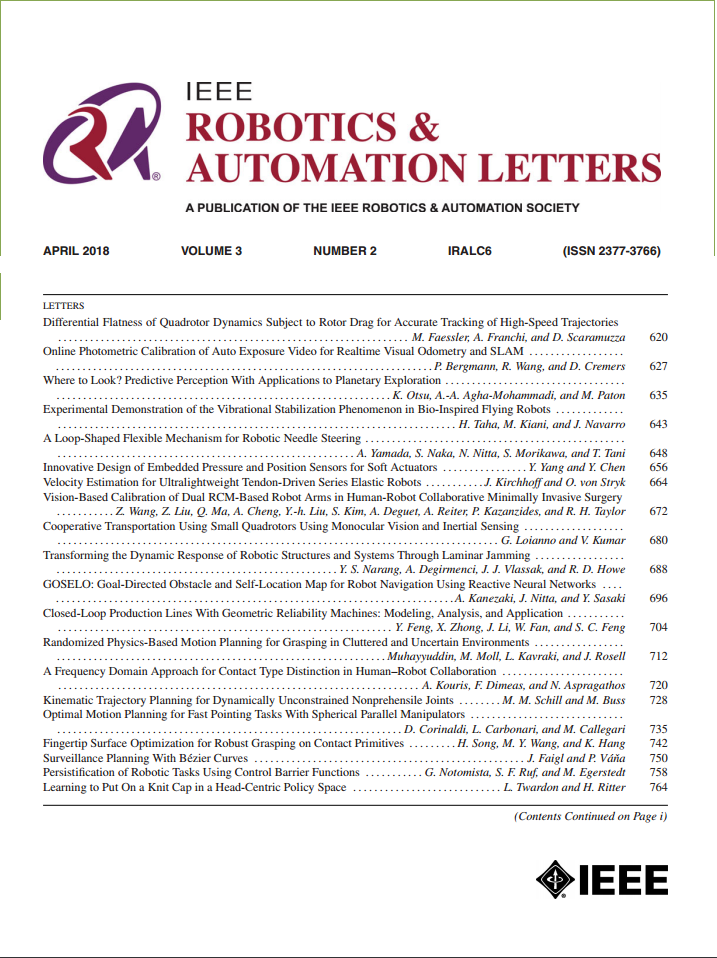基于远场图像的先验未知自然环境可遍历映射
IF 4.6
2区 计算机科学
Q2 ROBOTICS
引用次数: 0
摘要
在未知环境中导航时,机器人主要依靠近似特征来指导决策,例如从激光雷达获取深度信息来构建成本图,或者从图像中获取局部语义信息。当关于地图成本的假设超出了近似特征的范围时,这些特征可以使用的有限范围可能会导致机器人行为不佳。将“远场”图像特征整合到映射管道中,可以在未知地形中实现更智能的导航。为了利用远场特征导航,必须克服一些关键挑战。由于远场特征通常距离太远,无法精确定位,因此很难在地图上定位。此外,机器人与这些特征之间的较大距离使得将这些特征与其导航含义联系起来变得困难。我们提出了FITAM,一种学习使用远场特征来预测成本的方法,以自我监督的方式引导导航通过未知环境。与以前的工作不同,我们的方法不依赖于平坦的地面假设或距离传感器来定位观测。我们通过Clearpath Robotics Warthog在森林环境中导航的模拟试验和实际部署,展示了我们方法的优点。本文章由计算机程序翻译,如有差异,请以英文原文为准。
Far-Field Image-Based Traversability Mapping for a Priori Unknown Natural Environments
While navigating unknown environments, robots rely primarily on proximate features for guidance in decision making, such as depth information from lidar to build a costmap, or local semantic information from images. The limited range over which these features can be used may result in poor robot behavior when assumptions about the cost of the map beyond the range of proximate features misguide the robot. Integrating “far-field” image features that originate beyond these proximate features into the mapping pipeline has the promise of enabling more intelligent navigation through unknown terrain. To navigate with far-field features, key challenges must be overcome. As far-field features are typically too distant to localize precisely, they are difficult to place in a map. Additionally, the large distance between the robot and these features makes connecting these features to their navigation implications difficult. We propose FITAM, an approach that learns to use far-field features to predict costs to guide navigation through unknown environments in a self-supervised manner. Unlike previous work, our approach does not rely on flat ground plane assumptions or range sensors to localize observations. We demonstrate the benefits of our approach through simulated trials and real-world deployment on a Clearpath Robotics Warthog navigating through a forest environment.
求助全文
通过发布文献求助,成功后即可免费获取论文全文。
去求助
来源期刊

IEEE Robotics and Automation Letters
Computer Science-Computer Science Applications
CiteScore
9.60
自引率
15.40%
发文量
1428
期刊介绍:
The scope of this journal is to publish peer-reviewed articles that provide a timely and concise account of innovative research ideas and application results, reporting significant theoretical findings and application case studies in areas of robotics and automation.
 求助内容:
求助内容: 应助结果提醒方式:
应助结果提醒方式:


